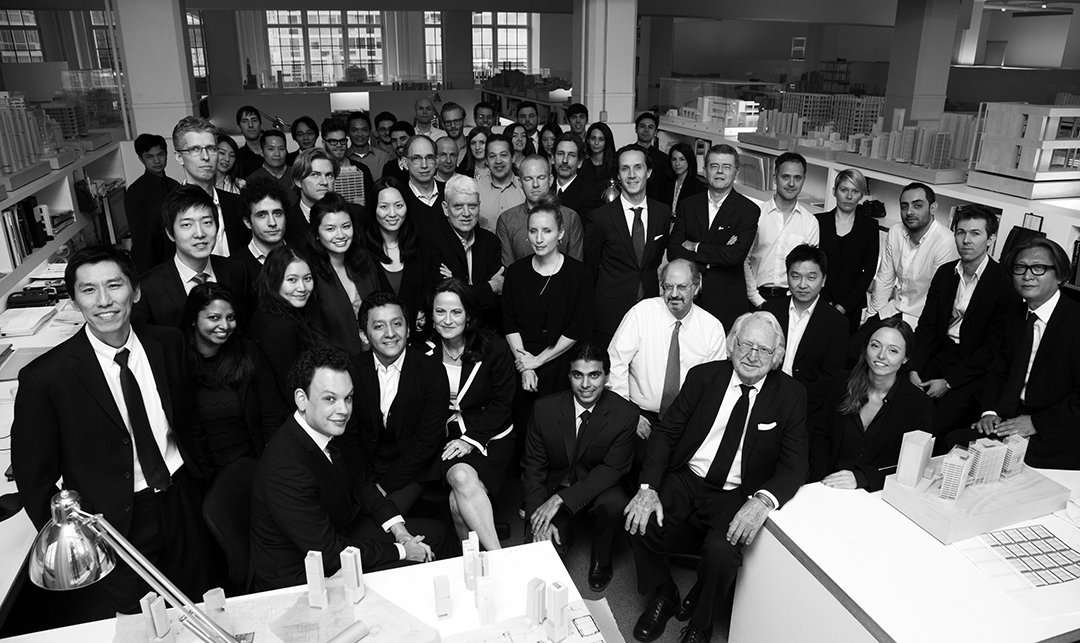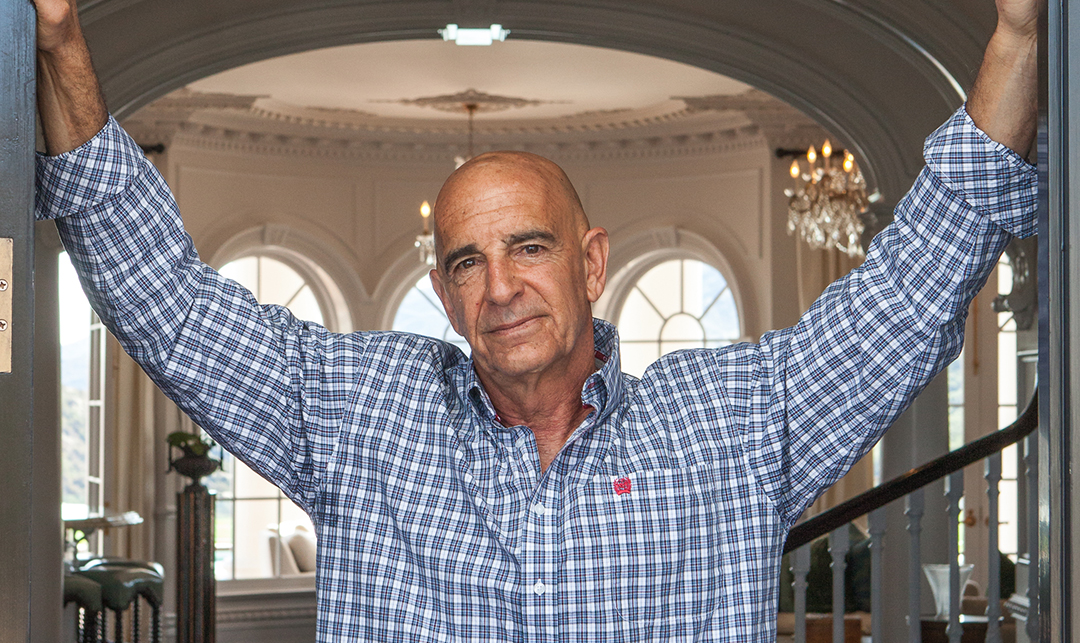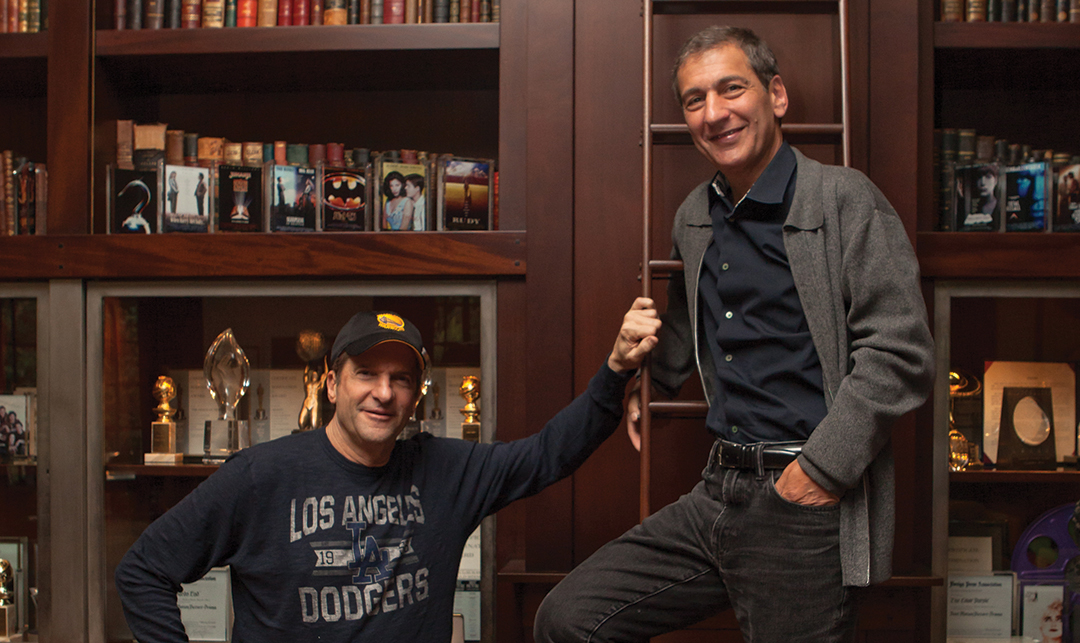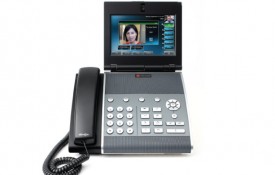The term disruptive has a positive connotation in tech. It suggests doing away with old, archaic business models that may no longer best serve the evolving consumer and marketplace. Following is a handful of the new breed of entrepreneurs who are transforming traditional industries.

Sweet Profits
{Beverly Hills} Sugarfina
[Confections]
As “the first candy store to go from clicks to bricks,” according to Rosie O’Neill, Sugarfina is breaking new ground in guilty pleasures. The idea for the boutique candy emporium was hatched after she and co-founder Josh Resnick went on a date to see Willie Wonka and the Chocolate Factory. After the movie, they started to wonder: Why do kids have all the fun? Where are the candy stores for grown-ups?
“Candy is such a large industry, there are so many players, and it’s been done the same way for so long,” says O’Neill. They launched sugarfina.com in August 2012, and the response was immediate and overwhelming. “We had tremendous press, and then partnered with Facebook as their candy partner,” she says. The first retail store, on S. Santa Monica Blvd. in Beverly Hills, was launched in November 2013. They recently did an angel round of funding, raising just under $2 million to help open new stores.
What makes them disruptors? “When you go to most candy stores you’ll see the same stuff. We have a different model,” says O’Neill. “We partner with artisan candy makers around the world. We have 20 different makers and 150 candies. About two thirds of our candy is exclusive to Sugarfina.”
Look for new stores to open in New York, San Francisco, Boston, and Washington, D.C. in 2015.
/ sugarfina.com

Tastemade founders Larry Fitzgibbon, Joe Perez, and Steven Kydd
The Flavor of Funding
{Santa Monica} Tastemade
[Multi-Channel Content]
Santa Monica-based Tastemade connects a global community of epicures. What started as YouTube channels grew into apps for iPhones and Androids. “We want our content to be available anywhere consumers want to see it, on platforms like Hulu, Amazon, Roku, and Apple TV,” says co-founder Steven Kydd. “Our audience is the millennial audience. A lot of those people do most of their consumption on mobile devices.”
Every month, the site has 22 million unique visitors and 140 million video views on more than 400 channels in 200 countries. “We created Tastemade with one goal in mind: to connect the world through food. With the explosion of online video, we thought we could create a global brand, called Tastemade because there are all these tastemakers around the world in food, travel and design.”
Kydd and fellow co-founders Larry Fitzgibbon and Joe Perez are veterans of successful Silicon Beach ventures, having helped grow Demand Media to its present success. “A year after we took Demand public [in 2011], Joe, Larry, and I left to think about what to do next. We all love food and travel, so combining that would be a personal passion. It could also be a big business opportunity—look at cable TV with the Food Network and the Travel Channel.”
Tastemade’s 7,000 sq. ft. soundstage is equipped with a bar set and three separate kitchen sets. In 2014, the company did more than a dozen sponsorship series for brands such as Grey Goose, Hyundai, and American Express. In June 2014, the company closed $25 million in Series C funding when Scripps Network Interactive, Liberty Media, and Comcast Ventures joined original investors RedPoint Ventures and Rain Ventures.
In addition to more brand partnerships, Kydd says the key to Tastemade’s sustainability will be its mobile app. “People are using the app not just to consume content, but to create content,” he points out. “We’ve had episodes created in 40 countries in 40 different languages.”
/ tastemade.com

John Tabis
A Bouquet of Investors
{Venice} The Bouqs
[Flowers]
Music originally brought John Tabis and JP Montúfar together at Notre Dame. “He was the guitarist in my college band,” recalls Tabis. Montúfar studied biology, got an MBA, and then went home to Ecuador to run his family’s large rose exporting farm. Tabis took a different path. “I went into strategic consulting with Bain and later advertising before getting an MBA at UCLA,” says Tabis. “I wound up in Disney’s corporate strategy group. But I was getting the itch to build something.” Inspired by LA’s Silicon Beach, John became VP of startup ShoeDazzle.
Then in 2012, flowers got the “band” back together. “JP told me his family had built a direct supply chain for flower farmers. Cut flowers are a time bomb. You have ‘X’ days before that flower from South America will no longer be a viable product. So I said, ‘If we can make it better for your family’s farm, why don’t we make it better for 10,000 family farms?’ Consumers aren’t happy either. Most brands put out a price that seems cheap, but it’s almost always double to triple because of handling, shipping, and care fees. So we just have one price with everything included, $40. That became a brand hallmark for us – what you see is what you get.
Startup funding was a brand new ballgame for the business partners, but Tabis credits the team at Amplify with making the process a fluid progression. Eight months later, (June 2013) The Bouqs closed its seed round of $1.1 million with Quest Venture Partners and Wavemaker. In June 2014, the company received $6 million in Series A funding from seven investors, including Amplify, Azure Capital Partners, KEC Ventures, Quest, Wavemaker, and SGVC. “Finding the right partners is like getting married,” Tabis reasons. “The right partners will understand the business, be more eager to get involved, and your terms will be better. If you get money from someone who sees the world in a wildly different way, it’s going to be an ongoing struggle.”
/ thebouqs.com

Flower Power
{Santa Monica} BloomNation
[Flowers]
“We were three guys with no background in the floral industry, venture capital, or e-commerce,” says BloomNation CEO Farbod Shoraka of he and fellow co-founders David Daneshgar and Gregg Weisstein. “But because we didn’t know anything about the industry, it helped us start with a clean slate.”
What they did know was that the floral industry was not keeping pace with technology, wilting with inferior product and impersonal service. Shoraka had an aunt in the floral business in Irvine. She was struggling taking orders from services like 1800FLOWERS and Teleflora. “She felt like an employee,” he recalls. “It was all cookie-cutter stuff.” On the consumer side, Shoraka says, “They don’t tell you which florist is fulfilling the order. You’re spending a lot of money, hoping the flowers look great.” When he sent flowers, “the recipient would send me a picture and it would look nothing like it did on the website.”
Shoraka, Daneshgar, and Weisstein founded BloomNation in 2011. In September 2013, the company closed a seed round with $1.65 million from Andreessen Horowitz, and in June 2014, they got $5.6 million in Series A funding from A Capital.
“We’re breaking down walls and allowing consumer and florist to connect directly,” says Shoraka. “We allow each individual floral designer to market themselves through our technology, giving them tools normally reserved for the eBays and Amazons of the world.”
/ bloomnation.com

Jeremy Bodenhamer
Packaged for Convenience
{Santa Barbara} ShipHawk
[Shipping]
The variables and hassles involved in shipping a package are finally being addressed. “It doesn’t matter if you’re a grandma shipping an antique or the logistics pro at Walmart,” says Jeremy Bodenhamer, CEO of ShipHawk. “The biggest pain point is in the shopping cart. The vast majority of large products on eBay are local pickup only. No one can find out what it costs to ship those things.”
When Bodenhamer founded ShipHawk in 2012, he set out to aggregate shipping data and makes it more accessible. Up to that point, small businesses that ship to multiple carriers had no tool that facilitated the process. Bodenhamer and the team at ShipHawk researched what could be done better in shipping cost calculation and how to access freight. “We actually meet the customer in the shopping cart,” he says. “We can auto-assemble orders and auto-assemble items into a package and have the capability to meet them at point of sale and we couldn’t do that without our backend quoting and order management technology.”
The ShipHawk team completed their Series A for $5m through Wavemaker Partners, Rothenberg Ventures, Karlin Ventures, and DN Capital in October. Bodenhamer says that having open lines of communication with potential investors is critical. “The fast ‘no’ is just as valuable as a fast ‘yes.’ There is plenty of money out there, [but] you [must] find it fast enough to keep the business going at the pace that it needs to go to keep growing.” / shiphawk.com

Ian Siegel, Joe Edmonds, Ward Poulos and Willis Redd
Staffing Simplicity
{Santa Monica} ZipRecruiter
[Employment]
By allowing employers to post to more than 50 job boards with one submission, ZipRecruiter exponentially revolutionized the job search process. Founders Ian Siegel, Joe Edmonds, Willis Redd, and Ward Poulos all had experience working at other startups, and they noticed rampant inefficiencies in staffing. “What’s true of startups is that they’re often too small to have an HR department, so we had to do all of our own job posting, all of our own candidate vetting,” says Siegel, who also serves as CEO. It was such an inefficient process, we all thought that there was a better way to do it.” The four founded ZipRecruiter in 2010, and today the company has “tens of thousands” of active subscribers, according to Siegel, ranging from the local liquor store to major brands such as Amazon or Chipotle.
After bootstrapping the company for four and a half years without outside investment, ZipRecruiter closed their series A investment of $63 million last August, with investments from Industry Ventures, Basepoint Ventures, and Institutional Venture Partners (IVP). Siegel projects the company’s revenue in 2014 in the “high 10s of millions,” with more than 100 percent growth over 2013, with similar growth projected for 2015. ZipRecuiter’s own workforce has more than quadrupled in the past year with 210 employees in November 2014 versus 49 at the same point in 2013. Look for the site to morph from simply candidate sourcing into a full HR platform in 2015, says Siegel. / ziprecruiter.com

Stephanie Horbaczewski
Fashionable Acquisition
{Hollywood} StyleHaul
[Fashion]
StyleHaul is quickly becoming one of the hottest online destinations for women. The YouTube-based fashion and beauty network has more than 60 million unique visitors every month and is spawning original content deals with major networks like Showtime and Oxygen. Co-founder Stephanie Horbaczewski suggests that to grow, one needs cat-like entrepreneurial instincts. “The biggest learning curve is to be decisive,” she says. “To take the chance that you’re making the wrong decision and making it anyway. The number one thing is executing.”
After coming up with the idea for StyleHaul while watching an interview of Ashton Kutcher and Jason Goldberg on the subject of short-form content, Horbaczewski followed her instincts. She quit her retail industry job and headed to Hollywood. She pitched the idea, raised some early capital, and rolled up her sleeves. “We went from two people in an office to doing almost a billion views a month and 5,000 channels in 63 countries.”
In November RTL Group acquired StyleHaul for $200 million. Horbaczewski will remain as CEO of the division, keeping her team intact, “which in a startup is extremely important.” Founded in 2011, the company will turn four years old at the end of January and currently employs 70 people in multiple offices around the world. / stylehaul.com

Hillary Kerr
Making the Scene in Style
{Los Angeles} WhoWhatWear
[Fashion]
Co-founders Hillary Kerr and Katherine Power met while Kerr was filming Project Runway and Power was working at ELLE. When management opted to fold ELLEgirl, reasoning that the younger generation is no longer interested in print magazines, the writing was on the screen. Celebrity paparazzi websites were starting to take off. “We were having all of these of-the-moment images of celebrities, but no one was addressing the fashion,” says Power. So the pair launched WhoWhatWear.com in 2006.
Serving up daily doses of style and fashion to millennial women while focusing exclusively on “people, designers, and products that we really like,” according to Kerr, the site has exploded to become a fashion influencer. “By giving people these really beautiful images that inspire them, and then giving them all of this information about what’s going on in said image or trend for budget, body type, their home, their personal taste, and their beauty preferences, they feel inspired to make a purchasing decision or just try something new,” she adds.
The partners have leveraged the brand to launch two “sister” sites: Domaine (dedicated to home décor) and Byrdie (focused on makeup and beauty). Creating content that has the quality control of a large print publication but is adapted to the digital world has been kind of the “secret sauce” that has defined the brands, according to Power.
Who What Wear raised just under $5 million through seed and Series A funding (from MESA+ and SV Angel) in 2012 and 2014, respectively. “Our approach is slow and steady wins the race,” says Power. “We had to keep a very lean operation and in doing so controlled the risk and we were able to experiment a small amount at a time and that really paid off for us.”
/ whowhatwear.com; domainehome.com; byrdie.com

Katherine Power












































